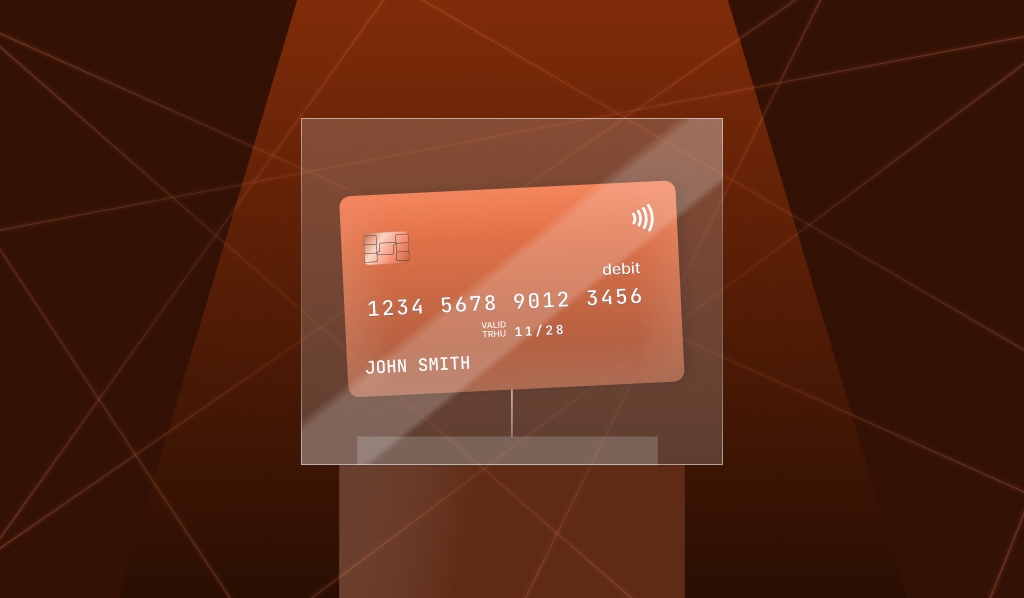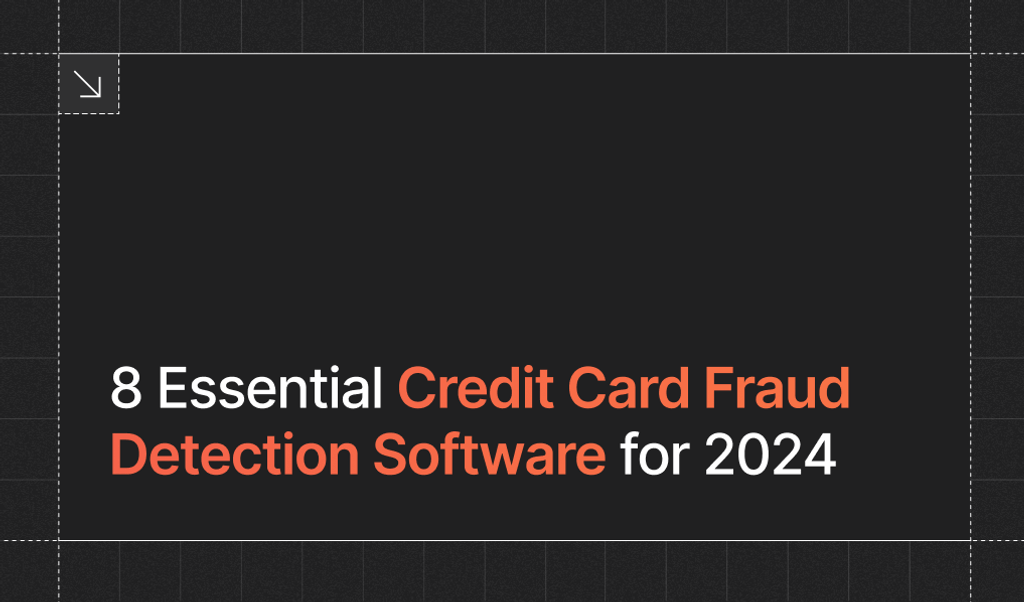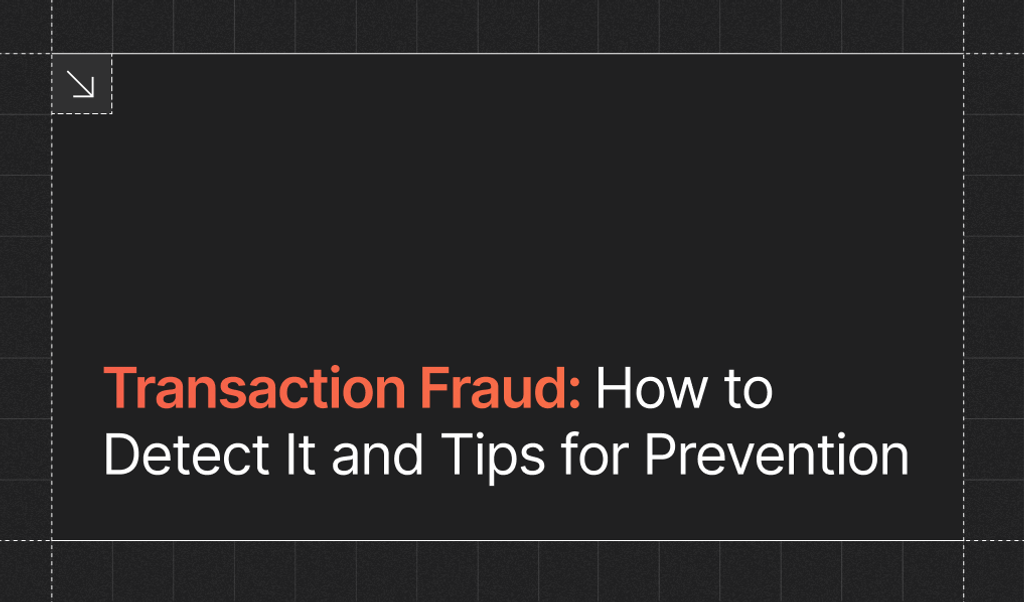
Summarize this article with
Payment fraud has become a growing global crisis. E-commerce businesses alone lose an estimated $48 billion annually to fraudulent transactions, and it's projected that online merchants will face cumulative losses of more than $340 billion between 2023 and 2027. Banks and payment providers are also under pressure, with some studies forecasting that annual fraud losses will exceed $40 billion by 2027.
Every fraudulent transaction creates ripple effects: chargebacks, higher processing fees, reputational damage, and lost customer trust. As digital payments expand, fraudsters are finding new ways to exploit vulnerabilities. At the same time, customers expect seamless, low-friction transactions.
The result is a high-stakes balancing act: companies must stop fraud without slowing down revenue. Choosing the right payment fraud detection tool has become mission-critical in 2025.
Why payment fraud is hard to detect
Fraudsters are constantly changing their tactics, and their activity often looks just like legitimate customer behavior. That overlap makes it challenging to tell the difference, and even more difficult to stop fraud without disrupting real transactions.
Fraudsters continually adapt
Attackers move fast, using stolen or synthetic identities (blending real and fake information), card testing, and automated attacks to get past defenses. And every time businesses tighten their controls, fraudsters look for the next way in.
Fraud blends into normal transaction flows
Fraudulent activity often mirrors legitimate behavior. For example, fraudsters may use real addresses, residential proxies, or hijacked accounts, making anomalies hard to spot without slowing down genuine customers.
The balancing act
Businesses must stop fraud without introducing too much friction into the process. Overly strict rules risk false declines and customer frustration, while looser rules open the door to more fraud. Striking the right balance is a constant challenge for organizations.
Common types of payment fraud
- Card-not-present (CNP) fraud: Stolen credit card details used to complete online purchases without the physical card.
- Account takeover (ATO): Criminals gain access to legitimate accounts and use stored payment details to make unauthorized transactions.
- Friendly fraud/chargeback abuse: Customers dispute valid charges, leading to costly chargebacks.
- Promotion abuse and coupon fraud: Fraudsters exploit new-customer promotions, referral credits, or discount codes on a large scale.
- Transaction laundering: Bad actors process payments for illegal goods or services (e.g., through e-commerce marketplaces), disguising them as legitimate transactions.
Given the scale and complexity of these risks, companies require technology that can instantly separate legitimate customers from fraudsters. Many organizations are now relying on advanced payment fraud detection tools built to do exactly that.
Best payment fraud detection tools
Payment fraud detection tools use a combination of machine learning, device intelligence, behavioral analytics, and global data networks to flag suspicious activity and stop fraudulent transactions instantly. Below are some of the leading solutions available in 2025.
1. Fingerprint
Fingerprint helps businesses stop fraudulent orders, unauthorized transactions, and promotion abuse through advanced device intelligence. Each visitor receives a persistent visitor ID that persists even if they clear cookies, change their IP address, or browse in incognito mode. Using more than 100 device and browser signals, the platform detects anomalies like bot activity, browser tampering, and other suspicious behavior, making it possible to reliably identify returning users, whether they’re legitimate customers or repeat offenders.
Key strengths:
- Highly accurate cross-session/device identification
- 100+ risk-based signals to reduce false declines
- Scales easily to support both growing businesses and large enterprises
Pricing: Free up to 1,000 API calls/month. Pro Plus starts at $99/month for 20,000 API calls (web/iOS) + 500,000 Android calls, with additional usage billed at $4 per 1,000. Enterprise pricing is custom.
2. Kount (an Equifax company)
Acquired by Equifax in 2021, Kount assesses transaction risk as transactions occur using its Identity Trust Global Network, drawing from billions of interactions to inform fraud scoring.
Key strengths:
- Large global data network for risk assessment
- Artificial intelligence–powered models with customizable business rules
- Prebuilt integrations with payment gateways and platforms
Pricing: Essentials plan starts at $0.07 per transaction through select e-commerce marketplaces. The Advanced tier begins at $1,000/month, with pricing for the Enterprise and Custom tiers available upon request.
3. Signifyd
Signifyd protects e-commerce payments with instant order analysis and a chargeback guarantee, reimbursing losses on approved fraudulent transactions.
Key strengths:
- Machine learning–based order scoring
- Chargeback protection coverage
- Plug-and-play e-commerce integration
Pricing: Custom, based on order volume and business needs. Merchants pay a percentage of order totals only on approved transactions. Chargeback guarantee coverage is optional as an add-on.
4. Riskified
Riskified focuses on e-commerce fraud detection, applying machine learning to order histories and offering chargeback guarantees.
Key strengths:
- Transaction models trained on large retail datasets
- Chargeback coverage for approved fraud cases
- Designed to improve approval rates
Pricing: Custom, based on a revenue-share model. Quotes tailored to factors such as annual revenue, sales volume, and industry.
5. Forter
Forter applies identity-based decisioning to evaluate transactions at every stage of the customer journey, preventing payment fraud as well as account and loyalty abuse.
Key strengths:
- Identity-driven risk assessments
- Immediate approvals or declines
- Strong adoption in retail and travel
Pricing: Custom, structured around an organization’s risk profile and expected return on investment rather than fixed tiers.
6. Sardine
Sardine focuses on detecting payment fraud across cards, automated clearing house (ACH), and real-time payments using device, behavioral, and identity signals.
Key strengths:
- Detection of stolen card usage, card testing, and anomalous patterns
- Fusion of device, behavioral, and identity signals
- Focus on preserving approval rates with minimal friction
Pricing: Custom, based on factors like transaction volume, supported payment methods (ACH, cards), region, and currency conversion.
7. SEON
SEON provides payment fraud detection tools that combine device fingerprinting, email/phone intelligence, and behavioral analytics.
Key strengths:
- Device fingerprinting and multi-signal identity checks
- Granular detection logic and configurable rules for precise risk control
- API-driven, modular deployment for flexibility
Pricing: Transparent usage-based pricing starting at $599/month, with custom enterprise options available.
8. Feedzai
Feedzai supports banks and fintechs with continuous monitoring of card payments, transfers, and digital banking activity.
Key strengths:
- Artificial intelligence and machine learning models for large transaction volumes
- Coverage across multiple payment types
- Case management and anti-money laundering (AML) compliance support
Pricing: Enterprise-level and custom. Quotes based on transaction volume and deployment requirements.
9. Sift
As part of a broader digital trust and safety platform, Sift scores transactions on the spot and provides dispute management tools.
Key strengths:
- Machine learning–based payment scoring
- Chargeback management workflows
- Broad integrations with payment platforms
Pricing: Custom, depending on company size and transaction volume. Industry estimates suggest annual costs range from $200,000 to over $1 million.
10. Cybersource (Visa)
Acquired by Visa in 2010, Cybersource integrates fraud detection directly into Visa’s payments ecosystem. It combines device fingerprinting, velocity checks, and machine learning to score transaction risk.
Key strengths:
- Backed by Visa’s global payments network
- Instant risk scoring and rules engine
- Direct integration with payment flows
Pricing: Custom, typically per-transaction. Costs vary depending on processing volume, services required, and whether they are purchased directly or through a reseller.
11. ThreatMetrix (LexisNexis Risk Solutions)
ThreatMetrix combines device intelligence, behavioral analytics, and a global identity network to assess transaction risk.
Key strengths:
- Global Digital Identity Network for cross-industry risk assessment
- Device fingerprinting and behavioral monitoring
- Synthetic identity and account takeover prevention
Pricing: Enterprise-level and custom. Bases quotes on transaction volume, implementation, scope, and selected services.
12. ACI Worldwide (Proactive Risk Manager)
ACI Worldwide enables banks, processors, and large merchants to monitor card transactions and payments across multiple channels using a mix of rules-based detection and adaptive analytics.
Key strengths:
- Instant fraud detection across payment types
- Hybrid rules and machine learning models
- Case management tools for investigations
Pricing: Enterprise-level and custom. The vendor bases its quotes on transaction volume and solution configuration.
13. Featurespace (ARIC Risk Hub)
Featurespace uses adaptive behavioral analytics to detect payment anomalies and evolving fraud tactics.
Key strengths:
- Adaptive analytics that evolve with fraud tactics
- Live monitoring for card and digital payments
- Scalable for high-volume environments
Pricing: Custom, typically per-transaction and based on volume. Quotes are available upon request, tailored to the deployment scale and business needs.
14. FraudLabs Pro (freemium/open-source option)
FraudLabs Pro offers a lightweight fraud detection solution for smaller businesses or as a supplemental tool for larger organizations. It screens transactions through an API.
Key strengths:
- Geolocation and proxy/virtual private network (VPN) checks
- Customizable validation rules
- Plugins for e-commerce platforms
Pricing: Free “Micro” plan available for up to 500 transactions per month. Paid plans start at $29.95/month and scale with query volume and features.
How to choose a payment fraud detection solution
Selecting the right fraud detection platform will depend on your business model, customer base, and long-term goals. Here are some of the most important factors to consider:
Industry fit
Different tools specialize in different verticals.
- E-commerce retailers often prioritize solutions with chargeback guarantees and platform integrations, where false declines can directly reduce revenue and customer lifetime value.
- Banks and payment providers need enterprise-grade platforms that can effectively manage the continuous monitoring of high transaction volumes.
- Fintechs and iGaming platforms often seek flexible, API-driven solutions to counter threats such as bonus abuse, multi-accounting, and bot-driven attacks.
- Travel companies face unique risks, including fake bookings, loyalty program fraud, and the abuse of high-value refunds.
- B2B SaaS providers need protection against subscription fraud, fraudulent sign-ups, and account takeovers that can undermine their recurring revenue models.
Integration
Fraud tools must fit seamlessly into your existing payment stack. Look for options that offer robust APIs, software development kits (SDKs), and prebuilt integrations with the processors and platforms you are already using. The ease of integration will help teams get up and running quickly, delivering value faster while minimizing disruptions to existing systems and workflows.
Pricing models
As seen across the tools above, pricing structures vary widely. Vendors use subscriptions, per-transaction fees, revenue-sharing models, and freemium tiers. The right approach will depend on your transaction volume, average order size, and tolerance for risk-sharing.
Capabilities
With so many tools on the market, it’s clear that not all of them offer the same level of protection. When you’re comparing options, it helps to look closely at a few core capabilities:
- Artificial intelligence/machine learning adaptability to keep up with constantly evolving fraud tactics.
- Global data networks that provide a broader and more accurate foundation for risk scoring.
- Device intelligence to identify repeat offenders, spot anomalies, and detect suspicious activity.
- Chargeback protection that offers guaranteed coverage when fraud slips through.
Continuous improvement and adaptability
Fraud tactics evolve daily, so your prevention tools should too. The most effective payment fraud detection platforms are those that continuously update their models, retrain algorithms, and refine detection logic based on new patterns and attack methods. Regular improvements ensure the system stays ahead of emerging threats while minimizing false positives.
User experience balance
Fraud prevention only works if it doesn’t drive away your legitimate customers in the process. The most effective solutions minimize false declines and add friction only when the risk is high. A smooth, low-friction checkout keeps revenue flowing while still protecting your business against losses.
The path forward in payment fraud prevention
Payment fraud remains a persistent challenge in our digital economy, but businesses now have more tools than ever to combat it. Modern solutions can flag suspicious transactions as they occur, helping reduce chargebacks and safeguard customer trust.
The key is choosing a platform that can stop fraud effectively without disrupting the customer experience. Fingerprint is built with that balance in mind, combining persistent visitor identification with device intelligence to help businesses block fraud while keeping legitimate transactions frictionless.
Ready to solve your biggest fraud challenges?
Install our JS agent on your website to uniquely identify the browsers that visit it.
FAQ
Accuracy varies by provider, but leading platforms combine machine learning, behavioral analytics, device intelligence, and global data networks to reach very high detection rates. Many vendors report accuracy rates above 90%, although results vary depending on the industry, transaction volume, and the solution’s integration into payment flows.
The return on investment (ROI) of payment fraud detection tools comes from preventing chargebacks and fraud losses, reducing operational costs by minimizing manual reviews, and cutting false declines, thereby allowing more legitimate sales to go through. Just as importantly, strong fraud defenses preserve customer trust by keeping transactions secure. Together, these benefits often outweigh the cost of implementing a platform.



